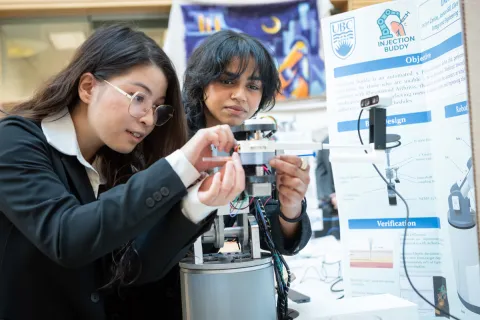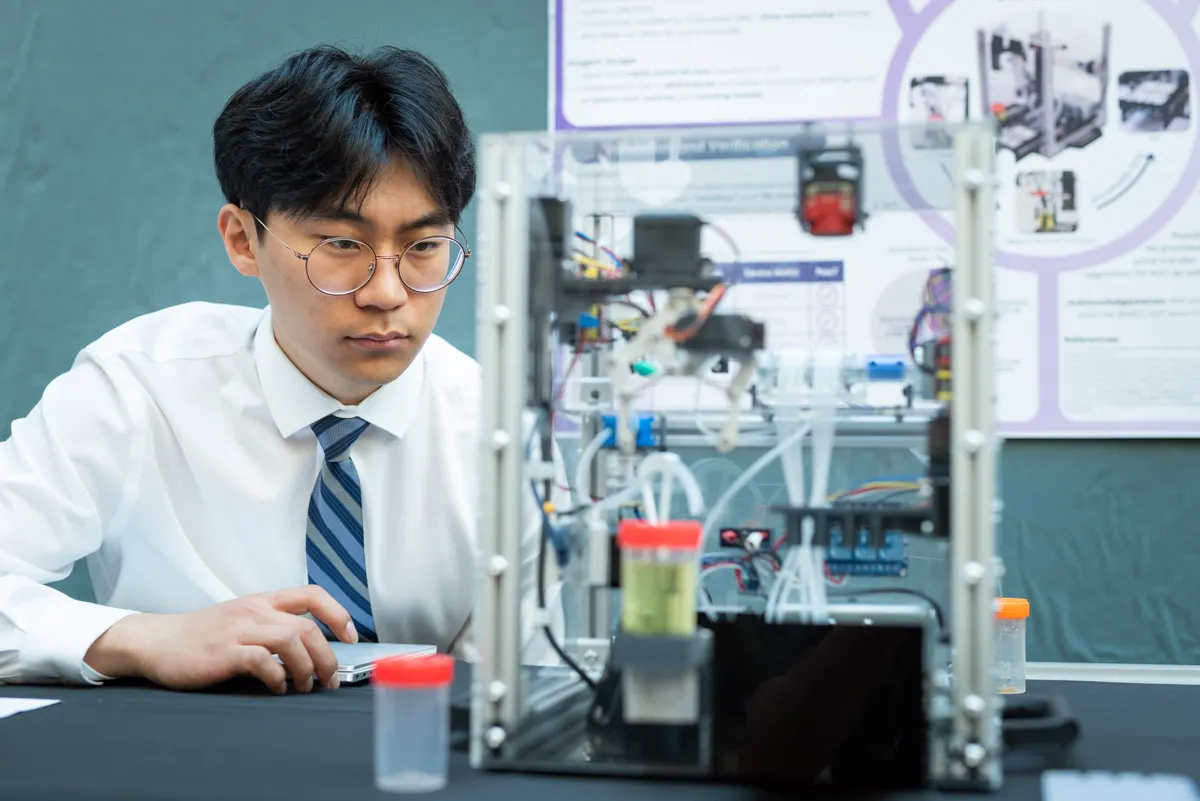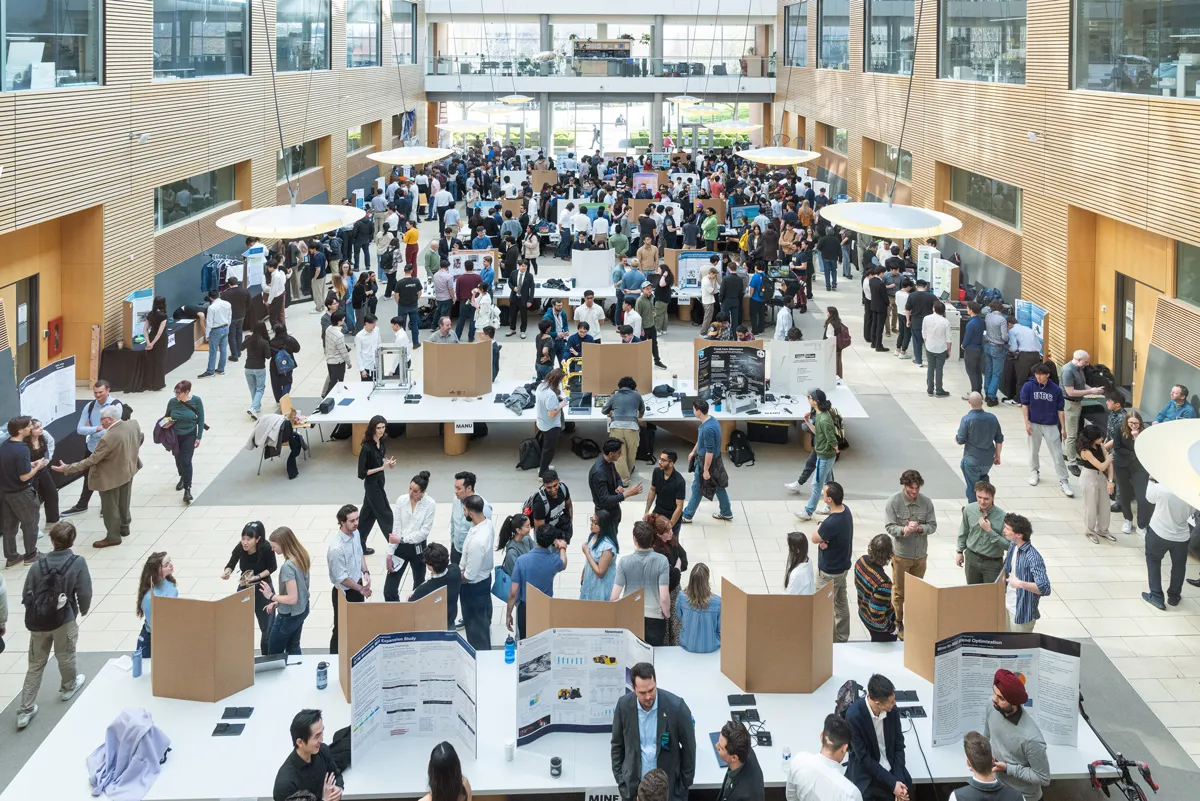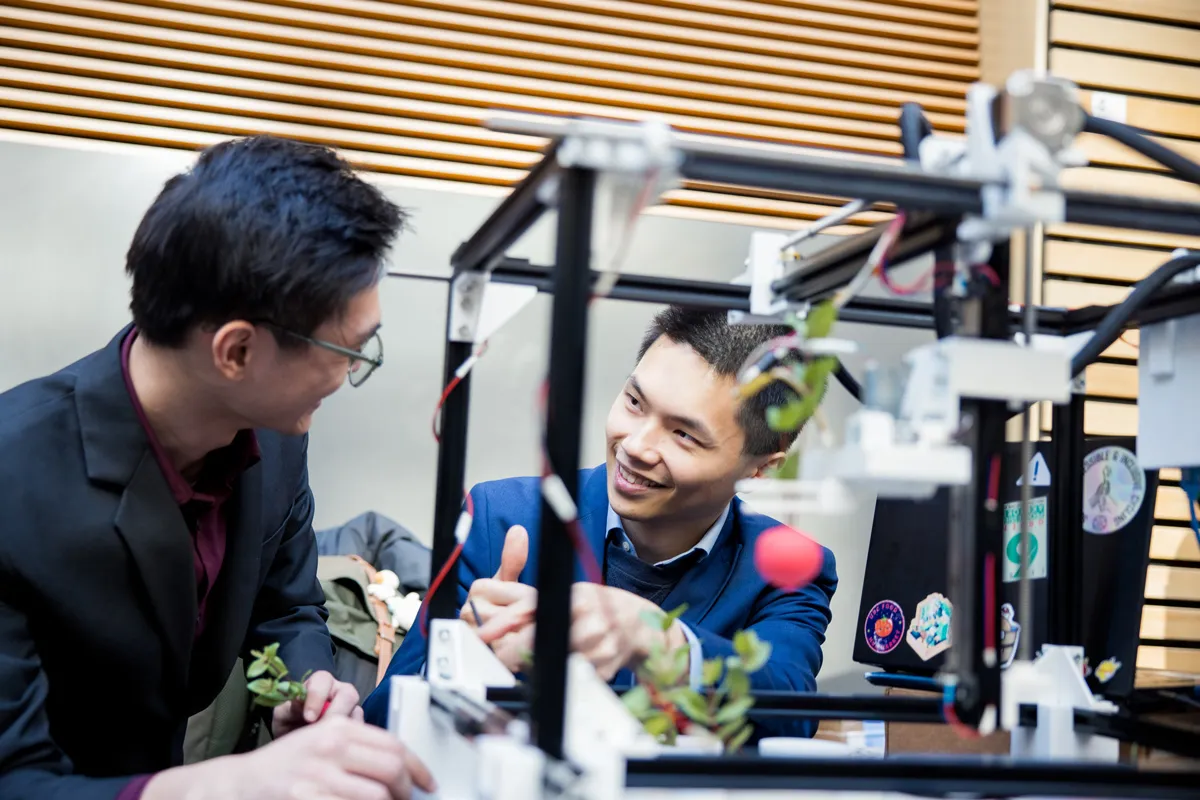UBC Engineering students innovate solutions for earth and beyond

Three projects ranging from safeguarding human health to mitigating natural disasters and envisioning sustainable life beyond our planet, powerfully illustrate how UBC Engineering students have the tools necessary to become leading agents of positive global change.
From fungi to landfills and bacteria to blimps, Design and Innovation Day 2025 presented students with the opportunity to showcase inventive solutions to problems at all scales. The 199 capstone projects on display were undertaken by small teams of final-year undergraduate students, some involving challenges brought forward by engaged community partners.

One such challenge is the increased resistance to antibiotics, especially when it comes to urinary tract infections. Antibiotic Susceptibility Testing (AST) can give personalized treatment recommendations, but the process is often time-consuming and requires that samples are sent out to a separate lab. A team of biomedical engineering students responded by developing a new device that facilitates AST at the point of care, reducing the need for broad-spectrum antibiotics. “The vision is to create a device that can be operated by non-technical users working closely with patients, rather than relying on third-party labs,” explained the team. The device fully automates the testing process, while keeping the sample sterile. The prototype is now in the hands of community partner FMRK Diagnostic Technologies, who will continue to develop the technology. The team envisions a future where the devices are available in facilities where patients are vulnerable to urinary tract infections, such as nursing homes or seniors' residences.
The challenge of quickly detecting health issues through innovative devices and testing methods honed their rapid prototyping abilities – a skill that was also applied to a separate capstone project on assessing avalanche risk.

A multidisciplinary team from the Integrated Engineering program created a probe that quickly gauges the hardness of snow, and displays the results on a smartphone app. Currently, forecasters use a manual test. They also had to respond to a unique set of conditions: the probe needs to work in extreme winter weather, while remaining small enough to carry in a backpack. The team worked with the Whistler Blackcomb ski patrol to test the device this spring and found promising results, with the probe able to provide test results in multiple locations in the time one traditional test takes. The probe’s usefulness extends beyond the ski hill – the team explained that they’d like to see the tool become available to anyone who recreates in avalanche territory.

Beyond the immediate and critical applications of engineering showcased in projects like the avalanche detection tool, Design and Innovation Day also offered a glimpse into the future of human endeavours. The Canadian Space Agency challenged teams from several universities across Canada to create components for a greenhouse on the moon.
Mechanical engineering students devised a system to harvest plants grown in a special medium – in this case, radishes. A prototype system drew attention from the crowd, as the machine methodically plucked radishes and safely placed them into a retrieval area. “Our favourite part of the project was the opportunity to design and build a physical prototype for such an exciting application,” said the team. Of course, plants grown on the moon will need a space to grow in. A Materials Engineering team was tasked with designing a pressure vessel to house the greenhouse equipment. The material for the vessel must maintain the internal atmosphere necessary for plant growth, while also withstanding the harsh lunar conditions. The team created several panels and had them on hand to show curious onlookers.
Students at UBC Okanagan’s School of Engineering also had the opportunity to display their work at their annual Capstone Showcase on April 9. Each of the 56 projects focused on one of five themes: Automation and robotics, design, energy, infrastructure and structures, and sustainability.
Through collaboration and a commitment to solving complex problems, these future engineers showcased their technical and non-technical skills to demonstrate how they embody the qualities required to address the grand challenges that shape our world, and beyond.







